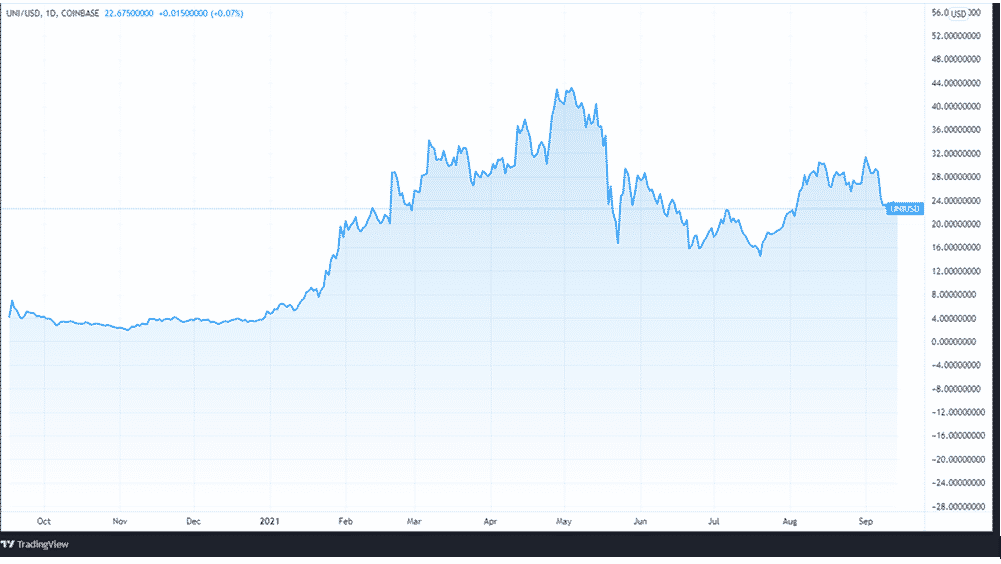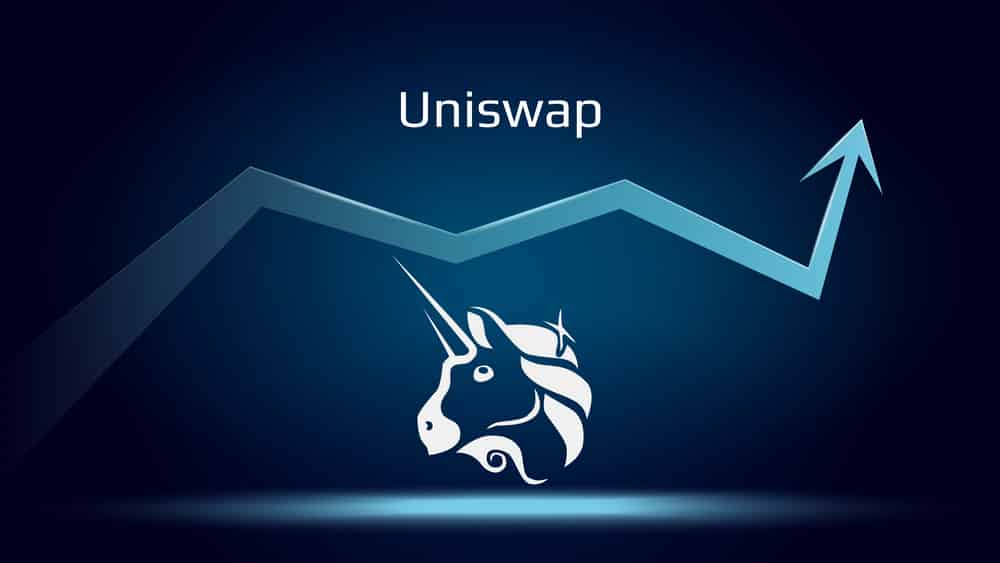UNI is the currency for Uniswap, an Ethereum-based decentralized exchange that operates on the Ethereum blockchain. UNI is a management token that allows owners to take part in decision-making on the running of the platform. Cryptocurrency exchanges can either be centralized or decentralized.
Centralized exchanges such as Binance, Huobi, or Coinbase are the most used and more familiar to most crypto users. This is quite understandable, considering that centralized cryptocurrency exchanges such as Coinbase and Binance handle the vast majority of cryptocurrency transactions. Centralized exchanges (CEX) are controlled by the respective companies behind them. The platforms are technically in control of the funds deposited by clients and keep the record of inflows and outflows.
CEXs serve as an intermediary for purchases and sales. In most cases, users must confirm their identities by inputting personal information. Many employ wallets with custodial cryptography, which means that investors can swap their crypto assets.
The Decentralized Exchanges (DEXs) are aimed at solving many of their centralized counterparts’ shortcomings, vulnerability to hacking, maladministration, and high transaction costs. DEXs, on the other hand, have their own set of issues, the most significant of which is a lack of liquidity circulating through an exchange that would otherwise facilitate faster and cheaper transactions.
DEXs, such as Uniswap, operate without the involvement of an intermediary. Instead, they serve as a platform where traders can easily swap their tokens. The DEXs do not employ custodial wallets but instead rely on smart contracts to facilitate trade. Liquidity pools are created on these platforms, and traders can swap their crypto pairs based on their contribution to the pool.
Exchange-traded currency pairs are contained within liquidity pools. An investor, for example, might place Ethereum (ETH) and ADA in a Uniswap liquidity pool. From there, they would be compensated a percentage of the trading fees collected each time someone traded ETH for ADA or ADA for ETH. This means that users get paid for contributing to the liquidity pool, which is an incentive to attract more users to the platform.
How different is Uniswap?
The fundamental difference between Uniswap and other DEXs is the application of a price mechanism known as the “Constant product market maker.” Uniswap exchange may accept any ERC20 token as a payment by financing it with an equivalent amount of ETH token being traded. In exchange for Aave, for instance, you would start a smart contract for Aave and build a liquidity pool, with, for example, Aave for $50 and ETH worth $50.
In this instance, in contrast to other protocols, Uniswap functions by applying a formula — X x Y = K to work out the price of Aave automatically. In the equation, the variables X and Y indicate the amounts of ETH and ERC20 tokens accessible in a liquidity pool, while K represents a constant.
ERC-20 simply provides a collection of token regulations and security considerations that are mostly connected with the strength of the Ethereum network. If there is a backlog in traffic, the price of gas required to complete transactions might rise, causing delays and unusually high transaction fees that affect everyone involved.
The X x Y = K equation, which is used to establish the price of a given token, takes into account the balance between ETH and ERC20 tokens, as well as supply and demand. As a result of this, every time a user purchases Aave with ETH, the supply of Aave reduces while the supply of ETH increases, resulting in an increase in the price of Aave.
Uniswap’s token prices, therefore, can only fluctuate as a result of exchanges taking place. What this means is that Uniswap balances the value of tokens and swaps them depending on the volume of trades involving them.
How to access Uniswap
Using Uniswap is quite easy, but ensure that you already have a wallet set-up supported by ERC-20 such as MetaMask, or Coinbase wallet. After obtaining one of those wallets, you must fund it with ether in order to trade on Uniswap and cover transaction costs. Next, go to https://uniswap.org, connect your wallet to the Uniswap wallet, and you are ready to go!
The Uniswap token (UNI)
Uniswap developed and distributed its own governance token to previous users of the network in September 2020. With that move, they provided a number of advantages over CEX, including increased revenue potential as well as the possibility for users to define the future of the platform.
Uniswap claims that the token was established to officially establish Uniswap as a public, self-sustaining entity while still protecting its independence.
A total of 1 billion units of UNI have been created, with about 611 million tokens in circulation at the time of writing. In the course of four years, all the coins will be distributed, with Uniswap adopting a “perpetual inflation rate” of 2% in order to maintain network share.

In terms of token distribution, the following sharing formula is currently in effect: 60% to members of the Uniswap community, 21.51% is in the hands of team members, 17.8% are held by investors, and 0.69% are held by advisors.
Using Uniswap for arbitrage
A crucial component of Uniswap is the presence of arbitrage traders. These are traders whose mission is to look for price variations in different exchanges and exploit them for profit. Suppose ETH was trading at $3,200 on Coinbase and at $3,300 on Binance. The smart move would be to buy ETH on Coinbase and sell it on Binance to make a quick profit of $100. When done in large quantities, such trades can translate to significant gains while taking on a modest level of risk.
In summary
Uniswap is a growing DEX that has significantly revolutionized how crypto assets are traded. It operates on the Ethereum ecosystem and offers great incentives for its users who contribute towards its liquidity pools. The platform is on to a good run, and its UNI token could as well be headed up the crypto market charts.



